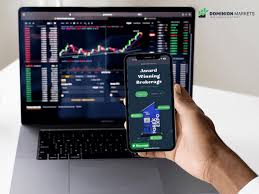
Learn Forex Trading Step by Step: A Comprehensive Guide
If you’re looking to delve into the world of finance, learn forex trading step by step Best Vietnamese Brokers is a great starting point. Though the realm of forex trading can seem daunting, with the right approach and resources, you can become a proficient trader. This guide aims to provide you with step-by-step instructions to start your forex trading journey, covering essential concepts, strategies, and tips to help you on your way.
Understanding the Basics of Forex Trading
Forex, or foreign exchange, involves trading different currencies against one another. It operates on a decentralized global market, open 24 hours a day, five days a week. The purpose of forex trading is to profit from the fluctuations in currency exchange rates.
Before you start trading, it’s crucial to understand some basic terminology:
- Currency Pair: In forex trading, currencies are traded in pairs (e.g., EUR/USD), indicating the value of one currency compared to another.
- Pip: This is the smallest price move that a given exchange rate can make based on market convention. Most currency pairs are quoted to four decimal places, with one pip being 0.0001.
- Leverage: This allows you to control a larger position with a smaller amount of capital, amplifying both potential profits and risks.
- Lot: Forex is traded in lots, which is a standardized quantity. A standard lot is 100,000 units of the base currency.
Step 1: Educate Yourself
Your journey begins with education. There are numerous resources available online, including courses, webinars, and forums. Websites like Investopedia, Babypips, and others provide insightful tutorials and guides for beginners. Books authored by experienced traders can also be incredibly beneficial.
Focus on understanding market dynamics, technical analysis, and fundamental analysis. Technical analysis involves evaluating price movements and patterns through charts, while fundamental analysis looks at economic indicators and news reports that affect currency values.
Step 2: Choose a Reliable Broker

Selecting the right broker is crucial for your trading success. A good broker will provide a reliable trading platform, competitive spreads, adequate leverage, and easy withdrawal of funds. Research various brokers, and consider platforms that have been positively reviewed by other traders. Check the broker’s regulatory status to ensure that they are operating within legal boundaries.
Step 3: Open a Trading Account
Once you’ve selected a broker, the next step is to open a trading account. Most brokers offer several types of accounts, including demo accounts that allow you to practice trading with virtual currency. This can be an excellent way to get a feel for the trading platform and test your strategies without the risk of losing real money.
When you’re ready to trade with real money, you can open a standard account. Ensure that you understand the broker’s terms and conditions, especially regarding fees and commissions.
Step 4: Develop a Trading Plan
A trading plan is essential for managing risk and setting your trading goals. Your plan should outline your trading strategy, including what currency pairs you’ll trade, your entry and exit points, risk management strategies, and trade size. Stick to your plan, and don’t let emotions drive your trading decisions.
Consider applying a risk-reward ratio that suits your trading style. Most successful traders use a ratio of 1:2 or higher, meaning that they aim to make twice the amount of their risk.
Step 5: Practice with a Demo Account
Before diving into live trading, practice your strategy on a demo account. Most brokers offer this feature, allowing you to trade with virtual funds. It’s an excellent way to understand the market, practice your strategies, and become familiar with trading tools without financial risks.
During this phase, focus on refining your entry and exit techniques, managing your trades, and testing different strategies to find what works best for you.

Step 6: Start Trading
When you feel confident with your skills and strategies, it’s time to open live trades. Start small; only trade with money you can afford to lose. Each time you place a trade, analyze your decision-making process, and learn from both your successes and failures.
Monitor your trades regularly and keep track of your progress. This will help you identify patterns in your performance and adjust your trading plan as needed.
Step 7: Manage Your Risks
Risk management is vital in forex trading. Set stop-loss and take-profit levels to minimize your losses and maximize your gains. Avoid risking more than 1-2% of your trading capital on a single trade to protect your account from significant losses.
Understand that losses are a part of trading. The key is to manage your emotions and remain disciplined in following your trading plan.
Step 8: Stay Informed and Keep Learning
The forex market is dynamic and ever-changing. Staying informed about economic news and geopolitical events can impact currency values. Utilize news websites, economic calendars, and other resources to make informed decisions.
Continuous learning is essential. Attend webinars, participate in trading communities, and read up on new strategies and market behaviors. Evolving your knowledge will help you adapt to market changes and foster long-term success.
Conclusion
Learning forex trading is a journey that requires patience, discipline, and a dedication to ongoing education. By following this step-by-step guide, you can develop the skills and knowledge necessary to navigate the forex market successfully. Remember, every trader experiences ups and downs; the key is to stay focused on your strategy and continually improve your skills. Happy trading!
